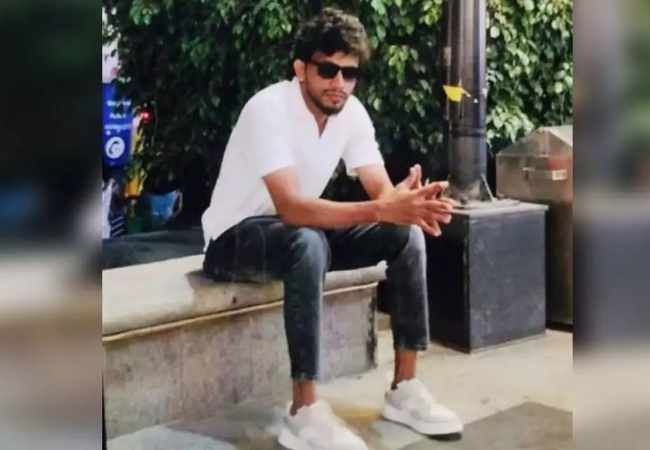Washington: A US count of the F-16s with Pakistan has found that none of them are missing, contradicting India's claim that one of its fighter jets shot down a Pakistani F-16 during an aerial dogfight on February 27, a leading American magazine reported Thursday.
Two senior US defense officials with direct knowledge of the situation told the Foreign Policy magazine that American personnel recently counted Islamabad's F-16s and found none of the planes missing.
"The findings directly contradict the account of Indian Air Force officials, who said that Wing Commander Abhinandan Varthaman managed to shoot down a Pakistani F-16 before his own plane was downed by a Pakistani missile," the report said.
"It is possible that in the heat of combat, Varthaman, flying a vintage MiG-21 Bison, got a lock on the Pakistani F-16, fired, and genuinely believed he scored a hit," the report said.
The report said that evidence also suggests that Pakistan's F-16s were involved in the aerial battle with the Indian Air Force and only the F-16 can shoot a US-made AIM-120 air-to-air missile.
When the incident occurred, India asked the US government to investigate whether Pakistan's use of the F-16 against India violated the terms of the foreign military sale agreements.
The Indian Air Force on February 28 displayed pieces of the AMRAAM missile, fired by a Pakistani F-16, as evidence to "conclusively" prove that Pakistan deployed US-manufactured F-16 fighter jets during an aerial raid targeting Indian military installations in Kashmir.
According to the magazine, Pakistan invited the US to physically count its F-16 planes after the incident as part of an end-user agreement signed when the foreign military sale was finalised.
Some of the aircraft were not immediately available for inspection due to the conflict, so it took US personnel several weeks to account for all of the jets, one US official said.
But now the count has been completed, and "all aircraft were present and accounted for," the official said.
"A US count of Pakistan's F-16 fleet has found that all the jets are present and accounted for, a direct contradiction to India's claim that it shot down one of the fighter jets during a February clash," Lara Seligman of the magazine reported.
The count of the F-16 fighter planes in Pakistan has been completed, and "all aircraft were present and accounted for," an unnamed defence official was quoted as saying by the report.
The US Department of Defence did not immediately respond to a question on its count of F-16 fighter jets in Pakistan. The US State Department and the Indian and Pakistani embassies declined to comment, the report said.
Pakistan had categorically said that no F-16 fighter jets were used and denied that one of its planes had been downed by the IAF.
But on April 1, Pakistan military spokesman Maj Gen Asif Ghafoor for the first time indicated that F-16s might have been used to hit Indian fighter jets during the aerial combat on February 27.
In a statement, he said Pakistan had the right to use "anything and everything" in its self defence.
He further said: "Even if F-16 have been used as at that point in time complete PAF was airborne including F16s, the fact remains that Pakistan Air Force shot down two Indian jets in self defence."
The report said the remnants of a US-made AIM-120 air-to-air missile was found near the site; out of all the aircraft involved, only the F-16 can shoot such a weapon.
"As details come out, it looks worse and worse for the Indians," Massachusetts Institute of Technology Professor Vipin Narang told the Foreign Policy magazine.
"It looks increasingly like India failed to impose significant costs on Pakistan, but lost a plane and a helicopter of its own in the process," he said.
Tensions between India and Pakistan escalated after a suicide bomber of Pakistan-based Jaish-e-Mohammed (JeM) terror group killed 40 CRPF personnel in Jammu and Kashmir's Pulwama district on February 14.
India launched a counter-terror operation against a JeM training camp in Balakot. The next day, Pakistan Air Force retaliated and downed a MiG-21 in an aerial combat and captured its pilot Wing Commander Varthaman, who was handed over to India on March 1 in an effort to de-escalate the crisis.
Let the Truth be known. If you read VB and like VB, please be a VB Supporter and Help us deliver the Truth to one and all.
Chennai (PTI): Streaming service JioHotstar on Tuesday announced that it will invest Rs 4,000 crore over the next five years to strengthen South India’s creative economy, unveiling a 25-title slate as part of a major push for regional content.
In one of the biggest announcements by an Indian streaming platform for the southern markets, the company showcased its “South Unbound” vision at a high-profile event here.
Sushant Sreeram, Head – SVOD Business & Chief Marketing Officer at JioStar, said the investment forms part of a broader collaboration with the Tamil Nadu government.
“Earlier today, JioHotstar formalised a Letter of Intent with the Government of Tamil Nadu in the presence of the Chief Minister M K Stalin. This outlines a shared commitment to invest in talent, expand infrastructure and build a future-ready creative economy from the South.
"As part of this vision, JioHotstar will invest Rs 4,000 crore to nurture creators, strengthen the production ecosystem and build a pipeline of stories that are ready for India and ready for the world,” he said.
Calling South India the “heartbeat of Indian storytelling”, Sreeram said the investment signalled the platform’s long-term commitment to local creators.
"JioHotstar started as a dream — to build entertainment rooted in India’s storytelling heritage and powered by cutting-edge technology. The resplendent storytelling traditions of the South motivate us to keep championing authentic, rooted narratives while offering greater accessibility and choices for every viewer," he said.
The event was attended by Tamil Nadu Deputy Chief Minister Udhayanidhi Stalin, veteran actor and MP Kamal Haasan, senior state officials, and leading stars and filmmakers from across the southern industries.
Deputy CM Stalin said the partnership will generate “1,000 direct jobs and 15,000 indirect jobs”.
“Cinema in Tamil Nadu has always been a force for social change. OTT is not replacing cinema; it is expanding it. Today, a filmmaker in Madurai or Salem can upload a story and reach audiences across the world. The cultural and economic impact of this partnership will be massive," he added.
aasan said Indian media and entertainment was undergoing a fundamental transformation driven not by technology alone, but by the audience itself.
“We gather at a moment when India’s media and entertainment is not merely growing, it is transforming. For the first time, this shift is not driven by device or format, but by the audience itself,” he said, adding that storytelling today is “screen agnostic”.
“Regional is becoming the new national, and ethnic the new international. Stories born in Madurai, Malappuram or Machilipatnam are no longer regional cinema; they are national cultural events,” Haasan said, giving the example of movies such as “Kantara”, “Drishyam”, “Baahubali”, “Pushpa” and Tamil hits like “Vikram”.
The event was also attended by Mohanlal, Nagarjuna, Vijay Sethupathi, Priyamani, Aishwarya Rajesh and others -- along with directors Jeethu Joseph and Ahammed Khabeer
The streamer's ambitious content slate, unveiled as part of its “South Unbound” initiative, includes sequels to blockbuster franchises, new long-format shows, films, adaptations, and high-engagement reality formats.
The Tamil slate features a mix of returning favourites and new originals, led by "Bigg Boss Tamil", now hosted by Vijay Sethupathi, and "Good Wife S2", the legal drama starring Priyamani.
The lineup also includes "LBW – Love Beyond Wicket", a relationship drama; the family comedy "Cousins and Kalyanams"; the psychological drama "Resort"; and "Heartbeat S3", which brings back Anumol, Karthik Kumar and Deepa Balu.
Other Tamil offerings include "Lingam", an action-drama; "Love Always", a multigenerational love story; the marquee title "Kaattaan" starring Vijay Sethupathi and Milind Soman; and "Second Love", a non-fiction relationship series.
In Telugu, the platform returns with "Bigg Boss Telugu" hosted by Nagarjuna, alongside new originals such as "Moodu Lantharlu" starring Aishwarya Rajesh; the police procedural "Vikram on Duty"; "Varam", a mystical relationship drama; and the hit comedy-drama "Save The Tigers S3" with Chaitanya Krishna.
The slate further includes "Vishakha", the Telugu adaptation of "Aarya" led by Kajal Aggarwal; the relationship-based non-fiction format "Mad for Each Other"; and the Telugu debut of the iconic adventure franchise "Roadies".
From Malayalam, the platform brings back "Bigg Boss Malayalam" hosted by Mohanlal; "Kerala Crime Files S3" featuring Aju Varghese; the mystery drama "Secret Stories: Roslin"; "Anali", "1000 Babies S2" with Neena Gupta and Rahman; and the hard-hitting drama "Pharma" starring Nivin Pauly.
The Kannada lineup includes "Bigg Boss Kannada" hosted by Kichcha Sudeepa; "Batchmates", a nostalgic friendship drama; and the food-and-humour-based non-fiction series "Comedy Cooks".
Across languages, the platform also announced new films such as "Lucky The Superstar", featuring GV Prakash, Anaswara Rajan and Meghna Sumesh, and "Kenatha Kaanom", positioned as broad-appeal mainstream entertainers.





